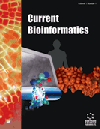
Full text loading...
Deep learning models have gained significant traction in predicting drug-target binding affinity, primarily focusing on deciphering intricate drug-target relationships. However, these models often overlook intermediate representations, thus failing to capture the holistic characteristics of proteins crucial for discerning drug-target interactions.
This study proposes a novel deep-learning model that captures comprehensive and long-range dependencies within protein sequences. Leveraging deep feature engineering and an inverted Transformer module, it integrates multi-scale chemical information of drug molecules using graph neural networks and hierarchical attention mechanisms.
The proposed model achieves state-of-the-art performance across multiple drug-target interaction datasets. It obtains MSE losses of 0.229 and 0.162 on the Davis and KIBA datasets, respectively, and AUC scores of 0.982 and 0.985 on the Human and C. elegans datasets.
These results demonstrate the model's superior efficacy in predicting drug-target affinity and interactions, showcasing its potential to expedite drug discovery processes.

Article metrics loading...

Full text loading...
References


Data & Media loading...

